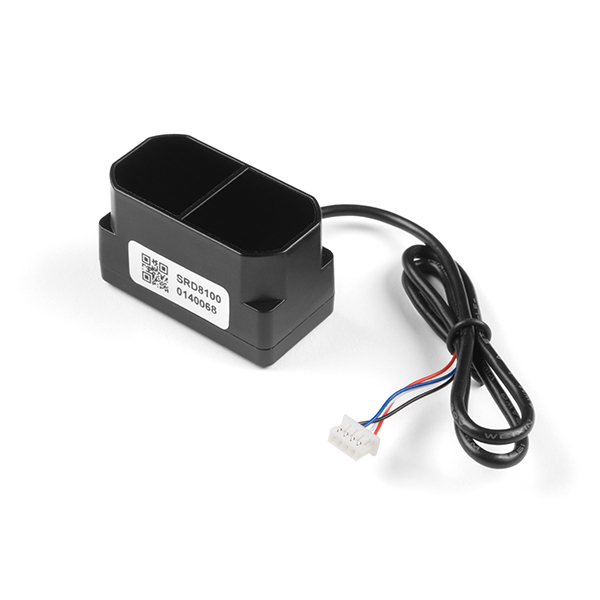This is a package and test application of an I2C driver for the TF Mini Plus Range Sensor. It was tested on Ubuntu 16.04 Xenial for the Jetson TX2
For more information about the sensor, visit:
- Install the dependencies:
apt-get install libi2c-dev apt-get install i2c-tools - Clone this project to your catkin workspace's src folder
- Run catkin_make in the catkin workspace to build the package.
-
After powering and connecting the sensor (or sensors) to your i2c bus, you can check the sensor address using i2cdect (In the following example, we are checking devices connected to the bus 1 and one device appears in the address 0x10).
i2cdetect -y 1 0 1 2 3 4 5 6 7 8 9 a b c d e f 00: -- -- -- -- -- -- -- -- -- -- -- -- -- 10: 10 -- -- -- -- -- -- -- -- -- -- -- -- -- -- -- 20: -- -- -- -- -- -- -- -- -- -- -- -- -- -- -- -- 30: -- -- -- -- -- -- -- -- -- -- -- -- -- -- -- -- 40: -- -- -- -- -- -- -- -- -- -- -- -- -- -- -- -- 50: -- -- -- -- -- -- -- -- -- -- -- -- -- -- -- -- 60: -- -- -- -- -- -- -- -- UU -- -- -- -- -- -- -- 70: -- -- -- -- -- -- -- -- -
If you want to change the sensor to a new address:
rosrun tf_mini_plus_ros change_address_node _address1:=16 _address2:=20 _bus:=1
where address1 corresponds to the original sensor address and address2 corresponds to the new address we want to give it, while bus corresponds to the bus we have connected the sensor to. Please keep in mind that the addresses are entered in decimal format, even though they are usually read in hexadecimal format. Hence the address 16 is equal to 0x10 and the address 20 is equal to 0x14.
-
First, make sure that the parameters in the launch/tf_mini_plus.launch file are properly set:
- tfmp_base_address: Corresponds to the sensor address (or the first address if multiple sensors are connected). Keep in mind that it is to be entered in decimal format.
- tfmp_bus: Corresponds to the bus where the sensor or sensors are connected
- tfmp_num_devices: Corresponds to the number of sensors that are going to be connected to the bus
Keep in mind that the sensors must have consecutive addresses. For example: if we have 3 sensors connected to the bus 0 on the addresses 0x11, 0x12 and 0x13. The parameters should be:
- tfmp_base_address = 17 (17 equals to 0x11 in hexadecimal)
- tfmp_bus = 0
- tfmp_num_devices = 3 (note that the devices must have consecutive addresses)
-
Launch the node:
roslaunch tf_mini_plus_ros tf_mini_plus.launch
The node now publishes all sensor range data over the topic /range_sensor/sensorX which is a msg type sensor_msgs/Range
When trying to access the i2c bus from any of the nodes of the package from a non root user. It is common that the system throws an error that looks like the following:
[ WARN] [1580230037.358886488]: ERROR opening sensor on bus 1 and address 0x13 -
>[i2c]Could not open the file: Permission deniedIn this case, it will be necesary to prun the following commands:
